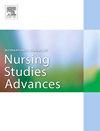认知偏差和环境因素解释护士跌倒风险判断的可变性:一项多中心横断面研究
IF 3.1
Q1 NURSING
International Journal of Nursing Studies Advances
Pub Date : 2025-06-01
DOI:10.1016/j.ijnsa.2025.100356
引用次数: 0
摘要
评估跌倒风险是一个复杂的过程,需要整合各种信息和认知策略。尽管这种复杂性,很少有研究探讨护士如何做出这些判断。此外,现有研究表明护士跌倒风险评估存在差异,但这种差异的原因及其适当性仍不清楚。目的探讨护士对跌倒风险的判断,以及认知偏差和环境因素对其判断的影响。方法采用有目的抽样的方法,对日本西部地区6家医院的335名护士进行在线调查。参与者评估了18种患者情况下跌倒的可能性,并完成了认知偏差的测量,如基本率忽视、信念偏差和可得性偏差。使用线性混合效应回归树来确定与他们的判断相关的因素,并使用线性混合效应回归模型检查判断变异性、认知偏差和临床专业之间的关系。结果护士的跌倒风险评估主要由患者是否求助决定,其次是是否使用安眠药、是否有导管或引流管以及患者的活动状况。判断变异性与护士的性别、教育程度、临床背景/专业以及对可得性偏见的易感性有关。结论:临床判断的变异性在反映个性化、具体情况的护理时可能是合理的。然而,由认知偏见引起的不一致是有问题的。医疗机构应该提供有针对性的培训,以增强相关专业知识,减少认知偏差对跌倒风险评估的影响。研究注册:未注册。本文章由计算机程序翻译,如有差异,请以英文原文为准。
Cognitive biases and contextual factors explaining variability in nurses’ fall risk judgements: a multi-centre cross-sectional study
Background
Assessing fall risk is a complex process requiring the integration of diverse information and cognitive strategies. Despite this complexity, few studies have explored how nurses make these judgements. Moreover, existing research suggests variability in nurses’ fall risk assessments, but the reasons for this variation and its appropriateness remain unclear.
Objective
This study aimed to investigate how nurses judge fall risk, and how cognitive biases and contextual factors are associated with their judgements.
Methods
Using purposive sampling, 335 nurses from six hospitals in western Japan participated in an online survey. The participants rated the likelihood of falls in 18 patient scenarios and completed measures of cognitive bias such as base-rate neglect, belief bias, and availability bias. A linear mixed-effects regression tree was used to identify factors related to their judgements, and a linear mixed-effects regression model examined associations between judgement variability, cognitive biases, and clinical speciality.
Results
Nurses’ fall risk assessments were primarily determined by whether patients called for assistance, followed by the use of sleeping pills, the presence of a tube or drain, and patient mobility status. Judgement variability was linked to nurses’ gender, education, clinical context/speciality, and susceptibility to availability bias.
Conclusion
Variability in clinical judgement may be justified when reflecting personalised, context-specific care. However, inconsistencies arising from cognitive biases are problematic. Healthcare organisations should offer targeted training to enhance contextual expertise and reduce the influence of cognitive biases on fall risk assessments.
Study registration
Not registered.
求助全文
通过发布文献求助,成功后即可免费获取论文全文。
去求助
来源期刊

International Journal of Nursing Studies Advances
Nursing-General Nursing
CiteScore
5.80
自引率
0.00%
发文量
45
审稿时长
81 days
 求助内容:
求助内容: 应助结果提醒方式:
应助结果提醒方式:


